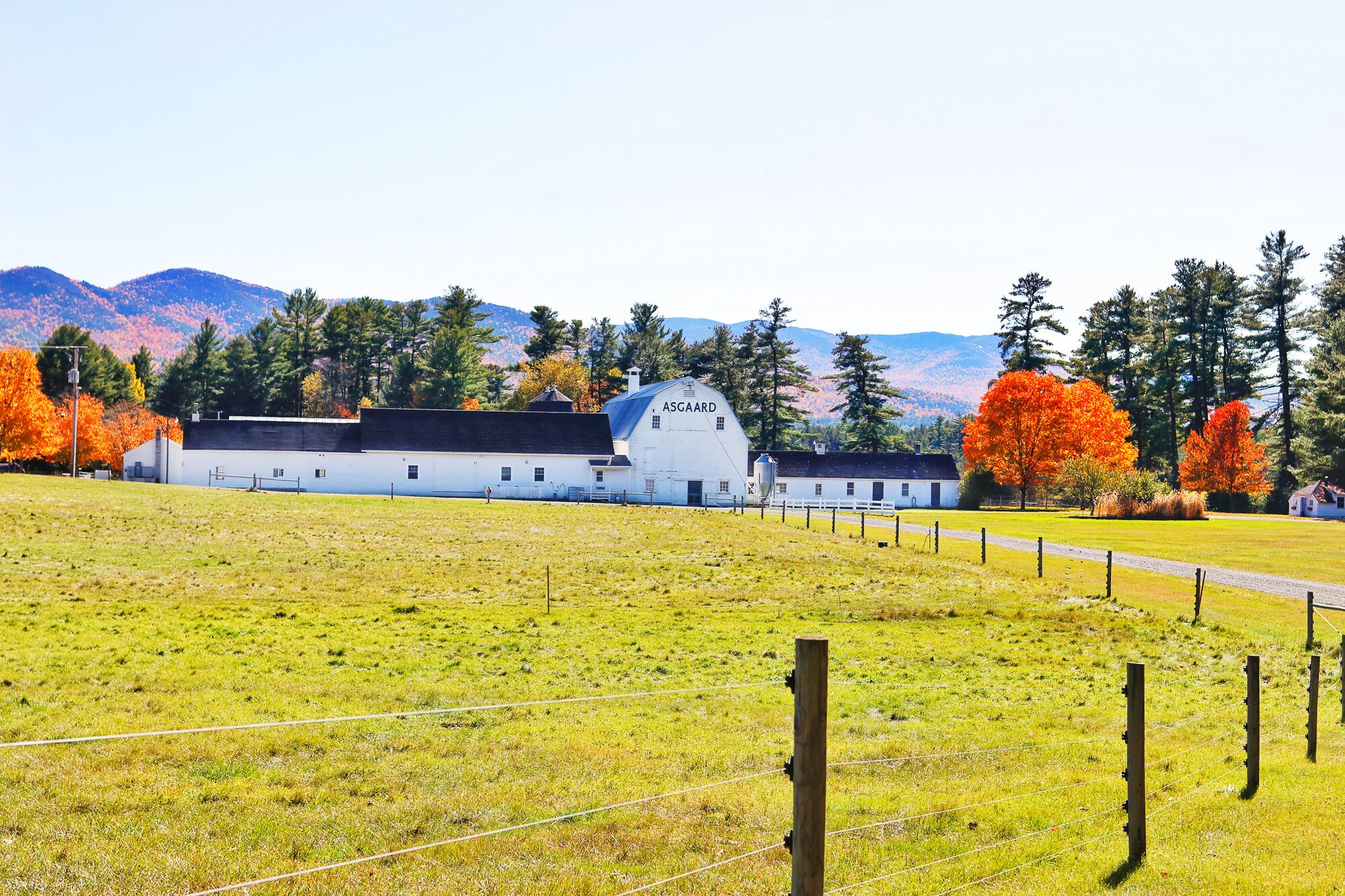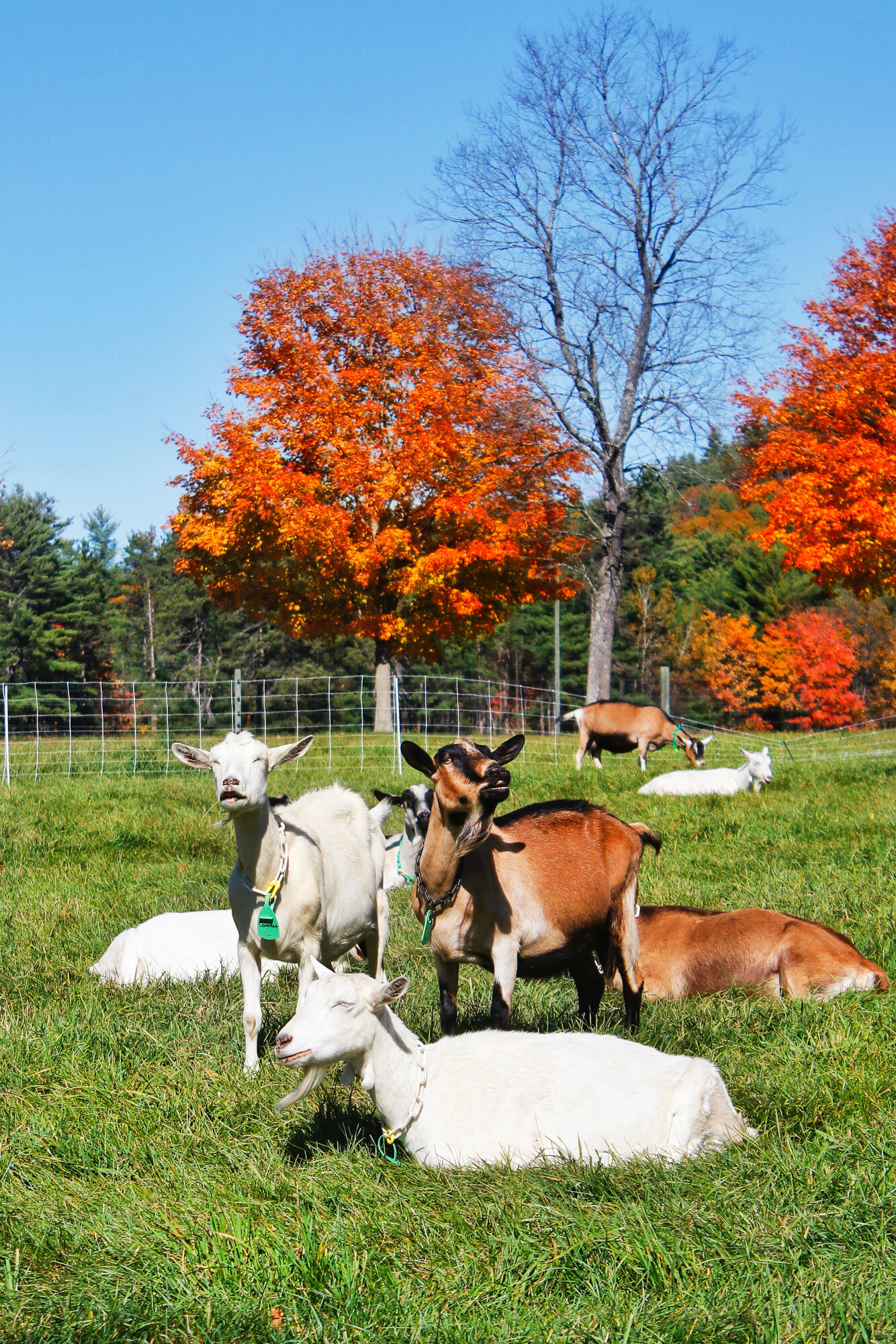A farm with a view! We headed into the Adirondacks earlier this fall to catch up with David Brunner and Rhonda Butler, the owners of Asgaard Farm and Dairy in Au Sable Forks. As soon as we turned down the tree lined drive, Tom and I both agreed that if we were a goat, this is where we’d like to live! We were thrilled to learn a bit more about the farm’s amazing history, what drew them to farming, and the benefits of their small, diversified, climate friendly approach.
ON BUYING A FARM
We've been here on the farm for a little over 30 years - since 1988. Rhonda grew up in Tennessee, and I grew up in Ohio, both in rural farming communities. We ended up going to college, getting jobs and landing in New York City working for financial institutions after having lived in San Francisco. We’ve lived in lots of parts of the world and had very exciting times, but we had always wanted a farm.
My family kind of migrated here from Ohio. My sister came to Lake Placid after the Olympics. My mother moved up here, because nobody was in Ohio anymore. And on one of our visits, we found this place.
It was a fixer upper. There was not a single window in this entire complex. The roofs were all failing. But it had a great history.
It was owned by an artist by the name of Rockwell Kent. He was a mid 20th century artist, author, writer, illustrator, adventurer, world traveler, and he was a bit of a political activist. Among all those other things that he did, he always wanted a farm. He was also a Columbia trained architect, so he built and designed the farm and had a very well known jersey dairy herd here. He was here from 1927 until he died in 1971. I don't think it was actively farmed past the mid 1960s.
So we've essentially restored the farm over 30 years. First the buildings, then the land and the soils. And over the years, we put our savings into adjacent properties. There's about 1500 acres here now with about one thousand acres of forest which we manage.
David Brunner and Rhonda Butler
ON DIVERSIFIED FARMING
Of our 30 years here so far, we spent probably 15- 20 years coming here first for vacations, then coming once a month, then coming once a week. We spent 15 years more or less working on the place and thinking about how we would put it back into operation.
We decided on a goat dairy as our anchor activity. We milk 60 goats and make cheese here in the creamery onsite.
In order to make the farm work both in terms of in terms of caring for the land, as well as the business, we’ve created a diversified small farm. We have beef cattle, poultry, laying hens, and pigs. And that all works together. The fields are good examples of that. The goats and the cows are dead end hosts for each other's parasites, so we graze one through, and graze the other through next. The cattle help to maintain pastures. The chickens follow the cattle, which is a good routine since there’s plenty to eat and they spread the manure around.
It's a small farm like many in our community, but we find it works well with this diversified set of activities.
ON FARMING AND CLIMATE CHANGE
I think climate change is the most important issue facing our generation. Undoubtedly, the most critical issue facing the next generation.
This kind of farming is great for climate change. If you can get the grass to grow like this, with roots deep in the ground, you're basically creating a system which is sequestering carbon, and you're putting oxygen back into the environment. This is a net positive from a climate perspective.
Forest Management is another dimension. We have about 20 acres of wetlands, which are very good carbon sequestering environments.
Beyond the farming practices, we're also committed to renewable energy. We cover about 85% of our electricity with solar, and we’re just installing a small scale wind turbine. We’re working within the APA’s guideline of 40 feet height on that. As a farm, we could go higher, but the idea of this design is that it will operate better in lower wind speeds.
ON A GOAT DAIRY
Of our 60 goats, we have mostly Alpines as well as Nubians, Saanens and LaManchas. They get fresh grass within their paddocks for two days. They can stay there for four days after that, and then the parasites start to emerge, and so begins the rotation.
Goats are seasonal milkers - they’re not like cows. So they'll all stop milking at the end of November or early December. They're like deer in that they breed only in the fall. You can't time them so that some are always in milk like you’d do with a cow. So we joke when some people say, oh, gee, what are your plans? We say, we make our plans in September because once we start breeding, we're stuck for another year!
We make about 10,000 pounds of cheese with the milk from our 60 goats, as well as our goat milk caramels.
ON GRASS FED BEEF
The idea behind the grass fed beef business is that the cows are eating plants that we can't eat. And as a result, the beef is a great, high protein food.
We keep about 30 cows. They're born on these pastures, and they live their whole lives on these pastures. Never in a barn. In the wintertime, we'll put them on a pasture in the back, where they can go in the woods when the weather is bad. We feed them baled hay and give them access to frost free water.
We have several breeds here but the mainstay is our Red Devon. It's the oldest cow recorded and it comes from Devon, England. It's a very important breed in American history as it probably came across on some the early ships. It was called the triple use cow then because they used it for beef, milk, and hauling, so it was a perfect family farm cow. We cross the Devon to Herefords. They're also an English breed and they grow really well on grass. I'm partial to the Devons because we wanted the heritage breed, and I’m partial to Herefords since I grew up around them.
Our cows are always on grass. They don’t eat any grain. Cows don't eat grains naturally, so it tends to poorly affect their performance or make them sick. The idea of grain feeding cows came from a desire to finish them quickly. So without grains, our cows take a little longer to finish - at between 24 and 36 months, whereas feeder calves finish in about 18 months.
ON LOCAL FOOD
Our distribution is all local. The whole idea is that it's a local farm for the local community. About 50-60% we sell direct and around 40-50% goes to local restaurants and local stores.
Here at the farm, we offer our cheese, eggs, grass-fed beef, whey-fed pork, goat milk caramels, and other local goods for pickup at our farm store.
Our sea salt caramels have been very popular product for many years. They have a real cult following. They are small batch, handmade, hand cut, so we can only make so many.
ON FARMING DURING COVID
We had to change everything. We put everything online - all online ordering and payment, and curbside pickup. And that's working well. We've extended our hours, and instead of being open two days a week, we're here every day for pickups except for Sunday. And while our sales to restaurants are down, our direct sales have gone up.
We're all looking for the silver lining in this current situation, and one is that the appreciation for the strong local food system has strengthened. And that's gratifying. We can only hope that it will remain after this is over.
hide-ad
Special thanks to Taste NY for making this series possible!
Taste NY at the Adirondacks Welcome Center offers nine state-of-the-art vending machines featuring food, beverages, and gifts from the Adirondack Region and across New York State. Find locally roasted coffee, cold beverages, chips, nuts, snacks, baked goods, milk, yogurt, cheese, ice cream, maple, honey, chocolate, candy, and artisan gifts.
Taste NY at the Adirondacks Welcome Center is operated by the Lake George Regional Chamber of Commerce.
Thanks for supporting the organizations that support Glens Falls Living!











